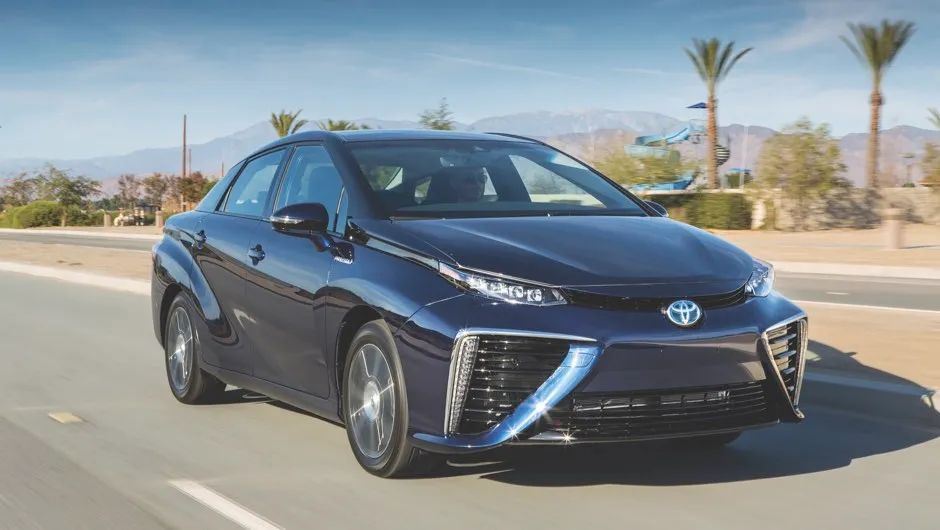We like the idea of hydrogen cars. You go to a fuel station, fill your tank, and drive off a few minutes later leaving nothing but steam in your wake. So, when the Toyota Mirai first went on sale in 2015, we hoped we might see more like it on the roads, with hydrogen fuelling stations following close behind.
Sadly, that hasn’t been the case. But with Tokyo 2020 about to turn the spotlight back on hydrogen cars with its hydrogen-powered Olympic Village, Toyota invited us to give its Mirai another chance. We drove the Mirai from London to Swindon on the eve of the release of the new model.
Read more about the future of transportation:
- How environmentally friendly are electric cars?
- The Lockheed Martin F-35 Lighting II: onboard with the world’s most advanced fighter jet
- Awesome concept motorcycles of the future
For a car that pumps steam out the back, it’s reassuringly unremarkable to drive. In the same vein, filling up the Mirai was a totally familiar experience (aside from the futuristic nozzle that pumps the gas into your tank). It costs about £60 to fill the tank, which should get you a range of 500 kilometres (300 miles), so it’s only marginally more expensive to fill than a petrol or diesel car.
Of course, it’s inside the car where things get more interesting. To power the motors, a fuel cell strips electrons from the hydrogen. These free electrons flow around the circuit as a current, and the hydrogen ions that remain react with oxygen ions to produce water so pure that it can be drunk from the Mirai’s exhaust (although we wouldn’t recommend it!).

As impressive as the car is, there’s still a way to go before hydrogen cars will be ubiquitous. Currently, there are only a handful of hydrogen refuelling stations around the UK, mostly clustered in London. More of the country will be serviced in the coming years: there are plans for a total of 19 to be built by 2020, and 65 by 2025.
It’s a ‘chicken and egg’ situation. If there are no filling stations, then there’s no market for the cars, and if there are no cars in the area, there’s no market for filling stations. But that doesn’t mean we’re done with hydrogen yet. Toyota hopes to give the car mass appeal with its new version of the Mirai. The gawky, angular design has been replaced with something sleeker and more elegant, while the interior has been given a luxury finish to match. The idea is to make hydrogen cars desirable, rather than a green oddity.
Hydrogen fuel cells outstrip petrol power for long journeys and heavy vehicles, though they’re less efficient for city driving conditions involving short trips and small vehicles, making them perfect for lorries, trains and buses. This is why a hydrogen filling station planned for Birmingham won’t be on a petrol forecourt but in a bus depot. Birmingham City Council has approved a trial of 20 hydrogen-powered buses in the city, providing a captive market for the hydrogen pump, and locals will be able to fill their own cars at a fuelling point on the same site.
In the shape of the new Toyota Mirai, with a more desirable hydrogen car on the market and the ‘hydrogen’ Olympics on the horizon, who knows what’s next?